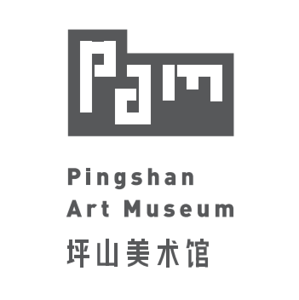December 1, 2019–April 19, 2020
Pingshan
惠德路
518118 Shenzhen
China
Hours: Tuesday–Sunday 9am–5pm
T +86 159 2002 0852
press@pingshanartmuseum.com
Curated by Li Zhenhua
Artists:
aaajiao (Xu Wenkai) / Michael Bodemann / Hu Jieming / Lü Shengzhong / Qiu Zhijie / Barbara Signer / Roman Signer / Wang Jianwei
Thanks To: Pro Helvetia / Yuz Museum / Long March Space / Aike gallery / Helu Expo
Coined “synchronicity” by Carl Jung, contemplations on meaningful coincidences and timelessness were reflected upon at Synchronicity, the first contemporary art exhibition of Pingshan Art Museum (PAM). The institution opened its door to the public in March 2019, amidst a cluster of cultural and civic facilities at the center of Shenzhen’s Pingshan District.
Supported by the district government and led by architect Liu Xiaodu as its director, PAM culminated its opening year with the exhibition positioned to bring critical moments in art since the 1960s. As Liu remarked, “the exhibition extracts prominent art practices from its recent memories, those have yet precipitated long enough to stand the test of time. They will serve as a point of departure for the museum, to navigate in aesthetics, humanities and art.”
The curator, Li Zhenhua, brought together a group of internationally-acclaimed artists. Be it inclusivity of alternative medium as well as diversified relationships between a work and its audience, these post-war approaches reinstate humanity’s timeless drive for novelty and self-reflection, in the organization of ideas, artworks or societies.
The museum welcomed visitors with six floors of galleries dedicated to the exhibition. Upon entry, the projection Ball of Blue (2012) by Roman Signer hung in the air, across the floor: Pants (2008), Carpet (2019) and Sculpture (2018). In the dark hall, each of them was lit by a focused light, brought to the attention of one’s eyes and mind, as ephemeral moments frozen in time.
“What lives in your head? What lasts for long?” asks Li Zhenhua, canonizing the 1969 exhibition Live in Your Head. When Attitudes Become Form curated by Harald Szeemann. As plethora of technology now offering instant knowledge, can we now only make choices between what is given or are we still aware of ourselves, to offer a possible alternative?
Up in the atrium, Tunnel (2019), commissioned by PAM, was devised to resonate the blue projection. It packed blue balloons into a wooden tunnel, which the artist later crashed in with a bike. Another commissioned work, Map Series (2019) by Qiu Zhijie, a four-floor high mural, drew a scientific energy form with ink.
From the third floor onwards, a selection of major Chinese artists’ work carried out developments in art of recent decades. Hu Jieming’s One Hundred Years in One Minute (2010) animated significant works in the world history of art with a touch of wit. Living Elsewhere (1997–99) by Wang Jianwei, a film, examined recent urbanization’s impact on its people through an anthropological lens. Lü Shengzhong’s Study of Landscape (2003) honored historical literati’s erudition while echoing contemporary relational aesthetics. Fully shelved with books covered in Chinese landscape calligraphy, the participatory study invited visitors to read and rearrange for a new image.
aaajiao(Xu Wenkai)’s Column (2017) presented the paradox of computer’s pre-set limit against its user’s “freedom” to change time. Converting redundant data of high-frequency trading to binaries, his Water Measurement - Gasoline (2017) questioned the efficiencies of technological advancement. Barbara Signer drew on nature for I Won’t Let the Sun Go Down on You (2016) and Capsule Coral, in collaboration with Michael Bodenmann (2013). Accompanied by ukulele tracks, the latter transmitted light-hearted melodies to all corners of the museum.
The exhibition was concluded by a retrospective installation of Roman Signer’s 205 8mm film works from 1975 to 1989. In the words of the curator, “All that language, geography and knowledge can connect through time, experience and reasoning, is collected together as a sequence of beads, from the year Roman Signer is born to right here, right now.”
About Pingshan Art Museum
Situated at the heart of Pingshan District in Shenzhen, Pingshan Art Museum (PAM) is among a cluster of cultural institutions and historic site. Poised to adjoin the rise of Pingshan, the museum is committed to build a premier destination to promote cultural creativity and meet the communities’ growing needs for cultural engagements.
PAM embraces a global vision to collect, exhibit and research an array of topics related to art in the contemporary world, blending creativity, vitality, interaction and cross-cultural awareness, in the hope to create a new age museum for future urbanism.



